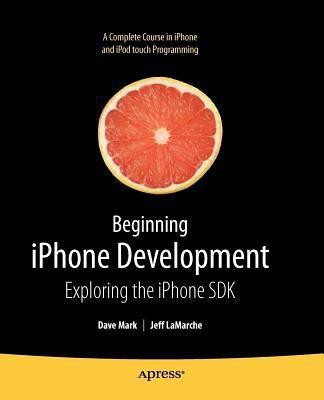Beginning iPhone Development(English, Paperback, LaMarche Jeff)
Quick Overview
Product Price Comparison
Are you a programmer looking for a new challenge? Does the thought of building your very own iPhone app make your heart race and your pulse quicken? If so, then Beginning iPhone Development is just the book for you. Assuming only a minimal working knowledge of Objective-C, and written in a friendly, easy-to-follow style, Beginning iPhone Development offers a complete soup-to-nuts course in iPhone and iPod Touch programming. The book starts with the basics, walking you through the process of downloading and installing Apple's free iPhone software development kit, then stepping you though the creation of your first simple iPhone application. You'll move on from there, mastering all the iPhone interface elements that you've come to know and love, such as buttons, switches, pickers, toolbars, sliders, etc. You'll master a variety of design patterns, from the simplest single view to complex hierarchical drill-downs. You'll master the art of table-building and learn how to save your data using the iPhone file system. You'll also learn how to save and retrieve your data using SQLite, iPhone's built-in database management system. You'll learn how to draw using Quartz 2D and OpenGL ES. You'll add multi-touch gesture support (pinches and swipes) to your applications, and work with the Camera, photo library, and Accelerometer. You'll master application preferences, learn how to localize your apps into other languages, and so much more. Apple's iPhone SDK, this book, and your imagination are all you'll need to start building your very own best-selling iPhone applications. Table of contents 1 Introduction, General iPhone SDK Info, Roadmap 2 Hello iPhone / Hello World 3 Introduction to and Controls 4 More Controls and User Interface 5 Introduction to Multi-View applications 6 Toolbar Controllers - building toolbar app 7 Navigation Controllers - building hierarchical 8 Adding Application Settings 9 File Management 10 Basic Drawing 11 Interacting with Multi-Touch Screen 12 Accessing Core Location 13 Accessing the Accelerometer 14 Handling Low Memory Notifications 15 Accessing the Camera and Photo Library 16 Accessing the address book 17 Where to go next


